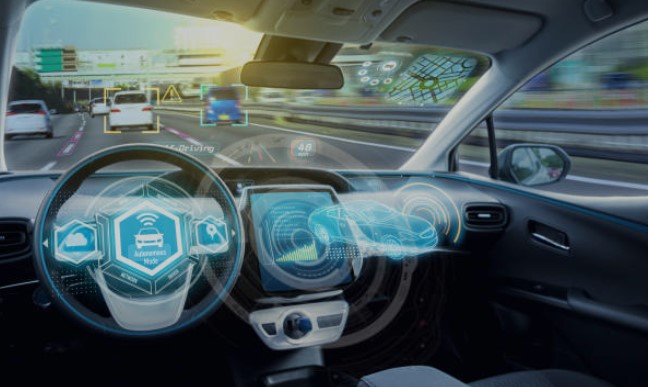Autonomous Vehicles (Self-Driving Cars): A Comprehensive Guide
Introduction
Autonomous vehicles (AVs), commonly known as self-driving cars, represent one of the most revolutionary advancements in transportation technology. These vehicles use artificial intelligence (AI), sensors, cameras, and complex algorithms to navigate roads without human intervention. As technology evolves, self-driving cars promise to improve road safety, reduce traffic congestion, and provide greater mobility options. However, challenges such as regulatory concerns, cybersecurity risks, and ethical dilemmas still need to be addressed before widespread adoption.
This article provides an in-depth look at the history, working mechanisms, benefits, challenges, and future of autonomous vehicles.
1. History of Autonomous Vehicles
The concept of self-driving cars dates back several decades, with significant progress in recent years.
• 1920s-1930s: Early experiments in automated vehicles, though primitive, explored radio-controlled cars.
• 1950s-1970s: Researchers tested electronic guidance systems to automate vehicle navigation.
• 1980s: The first major breakthrough came with Carnegie Mellon University’s Navlab project and Mercedes-Benz’s early autonomous prototypes.
• 1990s-2000s: DARPA (Defense Advanced Research Projects Agency) sponsored autonomous vehicle challenges, accelerating development.
• 2010s-Present: Companies like Tesla, Waymo, Uber, and Apple invested heavily in AV technology, bringing self-driving prototypes and partially autonomous vehicles to the market.
2. How Autonomous Vehicles Work
Self-driving cars rely on a combination of hardware and software to perceive their surroundings and make real-time driving decisions. The key components include:
a. Sensors and Cameras
• LIDAR (Light Detection and Ranging): Uses laser pulses to create a 3D map of the environment.
• Radar Sensors: Detect objects, measure speed, and assess distance.
• Cameras: Identify lane markings, traffic lights, signs, and pedestrians.
• Ultrasonic Sensors: Assist in parking and detecting nearby objects.
b. AI and Machine Learning
• AI algorithms process sensor data to predict and respond to road conditions.
• Machine learning enables the system to improve decision-making over time.
c. GPS and Mapping
• High-definition maps guide the car through road networks.
• GPS ensures accurate positioning and navigation.
d. Central Processing Unit (CPU) and Software
• The vehicle’s AI brain analyzes inputs and makes split-second driving decisions.
• Companies like Tesla (Autopilot), Waymo, and Nvidia lead in AV software development.
e. Connectivity and Cloud Computing
• Cars communicate with other vehicles (V2V) and traffic infrastructure (V2I).
• Cloud computing processes vast amounts of data to improve AV performance.
3. Levels of Autonomous Driving
The Society of Automotive Engineers (SAE) defines six levels of autonomy, from Level 0 (fully manual) to Level 5 (fully autonomous):
Level Description Example Vehicles
0 No automation (driver controls everything) Traditional cars
1 Driver assistance (e.g., cruise control, lane keeping) Honda Sensing, Ford Co-Pilot360
2 Partial automation (car assists but driver must remain engaged) Tesla Autopilot, GM Super Cruise
3 Conditional automation (car drives, but driver must take over if needed) Audi A8 with Traffic Jam Pilot (not yet widely available)
4 High automation (fully autonomous in certain conditions) Waymo self-driving taxis
5 Full automation (no driver needed at any time) Future AVs (not yet available)
Currently, most commercially available AVs operate at Level 2 or 3, with ongoing development toward Level 4 and 5.
4. Benefits of Autonomous Vehicles
a. Increased Safety
• AVs reduce human errors, which cause 90% of road accidents.
• Advanced sensors and AI react faster than human drivers to potential hazards.
b. Reduced Traffic Congestion
• AVs optimize traffic flow by communicating with other vehicles.
• Improved route planning minimizes unnecessary stops and slowdowns.
c. Accessibility and Mobility
• Self-driving cars provide independence for elderly and disabled individuals.
• Ridesharing services (e.g., Waymo One) improve urban transportation accessibility.
d. Environmental Benefits
• Efficient driving patterns reduce fuel consumption and emissions.
• Electric autonomous vehicles (EV AVs) further decrease environmental impact.
e. Productivity and Convenience
• Passengers can work, relax, or engage in leisure activities instead of driving.
• Fully autonomous taxis (robotaxis) could lower transportation costs.
5. Challenges and Concerns
a. Safety and Reliability Issues
• AVs still struggle in complex road conditions (e.g., heavy rain, construction zones).
• High-profile accidents (e.g., Tesla and Uber AV crashes) highlight technological limitations.
b. Ethical Dilemmas
• Who is responsible in an accident? (Manufacturer, programmer, or owner?)
• AVs must make moral decisions in life-threatening scenarios (e.g., choosing between pedestrians and passengers).
c. Cybersecurity Risks
• Self-driving cars can be hacked, leading to dangerous consequences.
• Stronger encryption and cybersecurity protocols are needed.
d. Legal and Regulatory Issues
• Governments are still developing laws regarding AV liability and road usage.
• Different regulations in each country slow down global adoption.
e. High Development Costs
• The R&D costs for AVs are billions of dollars, making mass production challenging.
• Affordability for consumers remains uncertain.
6. Future of Autonomous Vehicles
a. Expansion of Robotaxis and Autonomous Fleets
• Companies like Waymo, Cruise, and Tesla are testing fully autonomous taxis.
• Ride-hailing services will shift toward driverless operations.
b. Smart City Integration
• AVs will work with smart traffic signals and connected roads.
• Improved infrastructure (e.g., 5G networks) will enhance AV performance.
c. Evolution of AI and Machine Learning
• AI will continue to improve, making AVs smarter and safer.
• Real-time learning from road conditions will refine decision-making.
d. Mass Adoption of Electric Autonomous Vehicles
• Most self-driving cars will be electric or hydrogen-powered for sustainability.
• Tesla, Rivian, and other companies are developing AV EV models.
e. Widespread Industry Adoption
• Trucking and delivery services (e.g., autonomous delivery trucks, drones).
• Public transportation (driverless buses, autonomous metros).
7. Autonomous Vehicles vs. Traditional Cars
Feature Autonomous Vehicles (AVs) Traditional Cars
Driver Required? No (Level 4-5) Yes
Accident Rate Lower (AI-driven decisions) Higher (human errors)
Fuel Efficiency Optimized for efficiency Dependent on driver behavior
Cost High initial cost, but lower operational costs Lower purchase price but higher fuel/maintenance costs
Legal Complexity Requires new regulations Existing laws apply
Conclusion
Autonomous vehicles have the potential to redefine transportation, improving safety, reducing congestion, and increasing accessibility. While challenges such as legal, ethical, and cybersecurity issues remain, ongoing advancements in AI, machine learning, and infrastructure will drive AV development forward.
As technology evolves, self-driving cars will transition from experimental prototypes to everyday reality, reshaping how we travel, work, and interact with cities. 🚗🤖🚦



